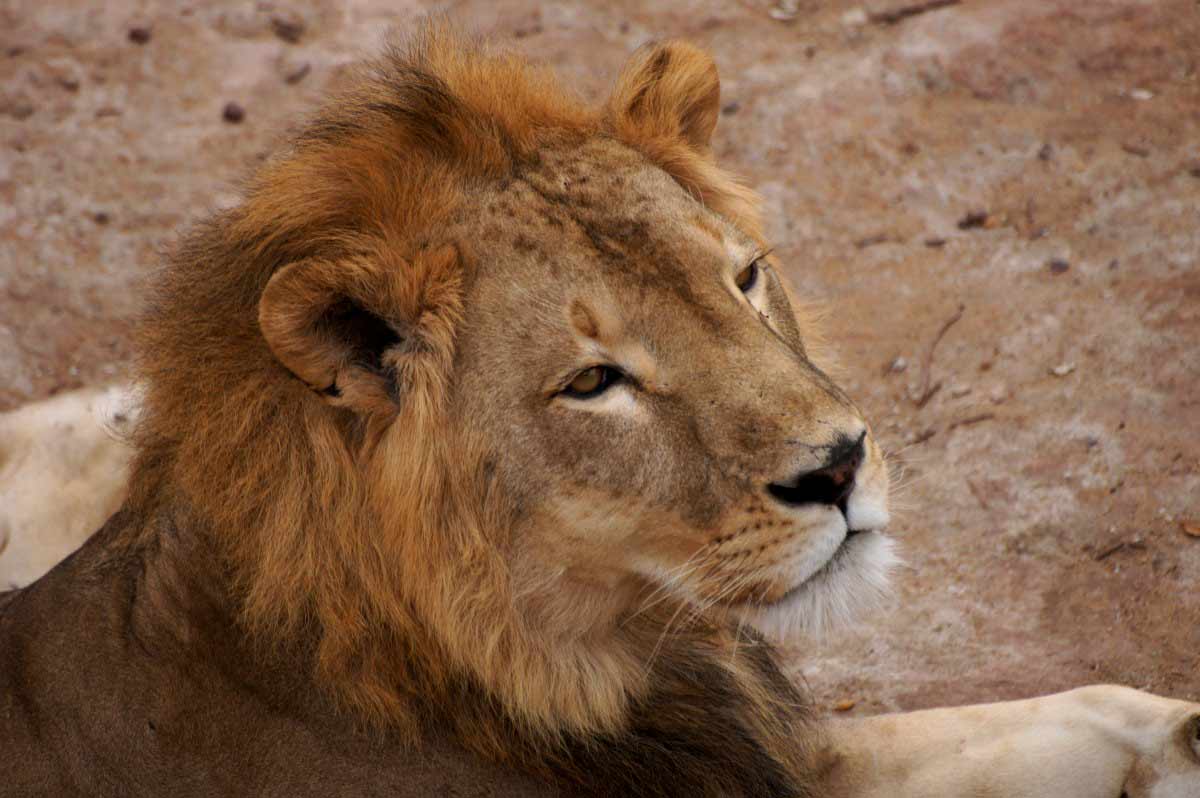We have found some very interesting facts about Mali for you. Mali, nestled in the heart of western Africa, presents a captivating tapestry of diverse landscapes primarily characterized by the Saharan and Sahelian regions. This landlocked country boasts a topography that varies from vast stretches of flat terrain to undulating expanses, offering a visual feast to any beholder. The dominance of arid landscapes punctuated by occasional oases imbues Mali with an aura of rugged beauty. This article will feature many more cool Interesting Facts about Mali.
Interesting Facts about Mali
The agricultural bounty afforded by the river’s presence sustains not only human populations but also supports thriving ecosystems and diverse wildlife. Thus, the fertile lands along the Niger River stand as a testament to the symbiotic relationship between nature and humanity, where abundance flourishes amidst the harshest of environments. Let’s read out some very Interesting Facts about Mali!
1. Mali’s Geopolitical Context
Nestled within a nexus of nations, Mali finds itself bordered by Senegal, Mauritania, Guinea, Ivory Coast, Niger, Burkina Faso, and Algeria. Despite its expansive landmass of approximately 480,000 square miles, Mali boasts a relatively modest population, predominantly clustered around the meandering waters of the Niger River. As Africa’s eighth-largest country and the world’s twenty-third largest, Mali stands as a sovereign state divided into ten distinct regions.
Its economic landscape is shaped by two pillars: mining and agriculture, with abundant natural resources like salt and gold fueling its economic engine. Notably, Mali ranks as Africa’s third-largest gold producer, underscoring its significance in the global mineral market. Amidst the broader geopolitical tapestry, Mali’s unique position underscores its role as a crossroads of cultures and commerce in the West African region.
2. Mali’s Cultural Mosaic: A Tapestry of Diversity
Within Mali’s borders, a rich tapestry of cultures and ethnicities interweave, creating a vibrant mosaic of identity and heritage. The Bambara (Bamana) people, with their distinctive language and customs, stand as the predominant ethnic group, their presence permeating the nation’s social fabric. However, Mali’s cultural landscape is far from homogeneous, with diverse groups such as the Fulani (Fulbe), Dogon, and Tuareg adding layers of complexity and richness to the country’s social tapestry.
Amidst this diversity, agriculture reigns supreme as Mali’s economic backbone, with cotton cultivation, nomadic herding, and fishing emerging as pivotal industries. This cultural amalgam, sustained by a shared reverence for the land and its resources, underscores Mali’s resilience and adaptability in the face of shifting socio-economic currents.
3. Historical Legacy: Mali’s Dynastic Heritage
Mali’s historical narrative is imbued with the echoes of ancient dynasties and illustrious civilizations that once flourished upon its soil. Among these, the empires of Ghana, Mali, and Songhai stand as towering pillars of precolonial Sudanic glory, their legacies etched into the annals of time. At the heart of Mali’s historical tapestry lies Timbuktu, a fabled center of commerce and learning that once thrived along the banks of the upper Niger River.
For centuries, this legendary city served as a convergence point for trans-Saharan trade routes, drawing caravans from the vast expanses of North Africa and the verdant woodlands of the south. Beyond Timbuktu’s storied streets, other cities like Djenné and Mopti bear testament to Mali’s rich cultural heritage, boasting architectural marvels and bustling marketplaces. Meanwhile, the Dogon region, with its cliffside settlements and vibrant artistic traditions, beckons travelers to explore its enigmatic allure, adding yet another layer to Mali’s multifaceted identity.
4. Language Diversity: Bambara and Mali’s Linguistic Landscape
Bambara stands tall as Mali’s official language, serving as a linguistic linchpin that binds the nation’s diverse populace. However, Mali’s linguistic tapestry is far from monochromatic, with a multitude of indigenous languages collectively enjoying the esteemed status of national languages. This linguistic diversity not only reflects Mali’s rich cultural heritage but also underscores the nation’s commitment to preserving its indigenous identities. Amidst the melodic cadences of Bambara and the myriad tongues that echo across its landscapes, Mali’s linguistic mosaic emerges as a testament to the resilience and vibrancy of its people.
5. Bamako: Mali’s Vibrant Heartbeat
Nestled along the banks of the Niger River, Bamako pulsates as Mali’s capital and largest city, casting its dynamic energy across the nation. With a population of 1,810,366 in 2009 and projected to reach 2.71 million by 2020, Bamako epitomizes Mali’s urban vitality and growth. Situated near the rapids that delineate the upper and middle Niger basins, Bamako occupies a strategic position in the southwestern expanse of the country. Beyond its geographical significance, Bamako serves as the beating heart of Mali’s administrative machinery, functioning as the nerve center from which the nation’s governance emanates. Amidst the hustle and bustle of its bustling streets, Bamako weaves a narrative of resilience, innovation, and cultural convergence, embodying Mali’s spirit of dynamism and progress.
6. Sundiata Keita and the Glorious Mali Empire
The indomitable spirit of Sundiata Keita, the visionary architect behind the magnificent Mali Empire, looms large in Mali’s storied history. Founded on the principles of progressiveness and prosperity, the Mali Empire rose to prominence as one of West Africa’s most illustrious civilizations. Following in the footsteps of its predecessor, the renowned Ghana Empire, Mali emerged as a beacon of wealth, culture, and enlightenment. Sundiata Keita’s legacy reverberates through the annals of time, symbolizing Mali’s enduring spirit of resilience and ambition. As a pivotal figure in Mali’s historical narrative, Sundiata Keita’s visionary leadership continues to inspire generations, underscoring the nation’s rich heritage and legacy of greatness.
7. A Tale of Names: Mali’s Linguistic Legacy
Formerly dubbed French Sudan, Mali bears the proud mantle of its illustrious predecessor, the Mali Empire, in its name. Rooted in the rich tapestry of the Bambara language, Mali’s nomenclature finds its origins in the word for hippopotamus, a revered creature depicted on the nation’s 5 franc currency. Likewise, the appellation of its capital city, Bamako, traces its etymology to the Bambara term signifying “place of crocodiles.” Through these linguistic nuances, Mali’s nomenclature serves as a poignant reminder of its cultural heritage and intrinsic connection to the land and its inhabitants.
8. Mali’s Salt Mines: Treasures of the Earth
Nestled within Mali’s rugged terrain lie the fabled salt mines that have long captivated the imagination of traders and travelers alike. Once hailed as one of the wealthiest nations on the globe, Mali’s prosperity was intricately linked to the abundance of its salt mines, which served as pivotal nodes along the cross-Sahara trade routes. Amidst this opulent backdrop, Timbuktu emerged as a beacon of Islamic scholarship and enlightenment, drawing seekers of knowledge from far and wide. Today, while the echoes of its former glory reverberate through the sands of time, Mali’s salt mines remain as enduring testaments to the nation’s rich legacy and economic significance.
9. Taoudenni: Mali’s Ancient Salt Oasis
In the heart of Mali’s desolate desert expanse lies Taoudenni, the oldest salt mine in the country and a testament to human ingenuity and resilience. Situated approximately 413 miles from the historic city of Timbuktu, Taoudenni’s salt mine stands as a symbol of Mali’s enduring connection to its natural resources. Here, amidst the harsh desert landscape, salt is painstakingly hand-mined from the depths of an ancient salt lake, harking back to centuries-old traditions. Carved into slabs and transported across vast distances by camel caravans or modern vehicles, Taoudenni salt embodies Mali’s rich cultural heritage and the indomitable spirit of its people. As a custodian of ancient traditions and a source of economic sustenance, Taoudenni salt mine stands as a living testament to Mali’s timeless allure and resilience in the face of adversity.
10. Cultural Kaleidoscope: Mali’s Vibrant Diversity
Mali’s rich tapestry of daily culture reflects the kaleidoscope of its ethnic and geographical diversity, weaving together a vibrant mosaic of traditions, customs, and practices. From bustling urban centers to remote rural villages, Malians celebrate their heritage through a myriad of colorful rituals and festivities. The ubiquitous boubloveous, flowing robes adorned with vibrant hues, epitomize the sartorial elegance of West African fashion, serving as a visual expression of cultural pride and identity.
Amidst the rhythm of daily life, traditional festivals, dances, and ceremonies punctuate the Malian calendar, offering glimpses into the nation’s storied past and enduring cultural legacy. Through these shared experiences and communal celebrations, Malians forge bonds of solidarity and kinship, embodying the resilience and vibrancy of their collective spirit.
11. Travel Risks: Navigating Mali’s Hazardous Terrain
According to the International SOS Travel Risk Map, Mali ranks among the top ten most hazardous nations in the world, presenting travelers with significant security challenges. Classified as posing a ‘very high danger of travel security,’ Mali’s volatile geopolitical landscape underscores the importance of exercising caution and vigilance when traversing its terrain. With ongoing security concerns ranging from terrorism to civil unrest, travelers are advised to heed travel advisories and exercise heightened awareness of their surroundings. Despite these challenges, Mali’s allure remains undiminished, offering intrepid adventurers a glimpse into its rich cultural heritage and natural splendor amidst the backdrop of its complex security landscape.
12. Taghaza: A Salt Mining Legacy
Nestled approximately 93 miles northwest of Taoudenni, Taghaza stands as a testament to Mali’s enduring legacy as a hub of salt mining and trade. Renowned as a prominent salt mining site, Taghaza served as a pivotal node in Mali’s economic network, facilitating the exchange of northern salt for the coveted gold of the southern regions. This intricate web of trade routes, spanning the length and breadth of the nation, fueled Mali’s prosperity and cemented its reputation as a global trading powerhouse. Today, Taghaza’s legacy lives on as a testament to Mali’s rich historical tapestry, offering glimpses into the nation’s vibrant past and its enduring contributions to the global economy.

13. Architectural Marvel: The Great Mosque of Djenne
The iconic silhouette of the Great Mosque of Djenne, dating back to 1907, stands as a timeless testament to Mali’s rich architectural heritage. Nestled within the historic city of Djenne, a UNESCO World Heritage Site since 1988, this magnificent edifice draws visitors from far and wide with its awe-inspiring beauty and cultural significance. Crafted from clay mortar and sun-baked clay bricks, the mosque’s distinctive mud-brick construction reflects the ingenuity of Mali’s artisans and the enduring allure of traditional building techniques. As a sacred sanctuary and architectural marvel, the Great Mosque of Djenne stands as a beacon of cultural pride and spiritual reverence, embodying Mali’s timeless legacy of craftsmanship and devotion.
14. Mali’s Geographical Diversity: From Desert Sands to Verdant Savannahs
Mali, a landlocked jewel in West Africa’s crown, boasts a diverse tapestry of landscapes that span from the sun-scorched expanse of the southern Sahara Desert to the lush greenery of the Sudanian savanna zone. Situated southwest of Algeria, Mali’s expansive territory covers an impressive 1,240,192 square kilometers. However, despite its vast size, approximately 65 percent of Mali’s land area is shrouded by desert or semi-desert terrain, a testament to the country’s arid climate and rugged topography. Amidst this stark juxtaposition of environments, Mali’s geographical diversity serves as a crucible of life, nurturing a wealth of biodiversity and sustaining the livelihoods of its resilient populace.
15. The Glorious Legacy of the Mali Empire
The Mali Empire, an illustrious chapter in Africa’s pre-colonial history, stands as a testament to the power and prestige of one of the continent’s most formidable kingdoms. Established in the 11th century, the Mali Empire flourished for centuries, shaping the course of regional politics and commerce with its expansive reach and enlightened governance. However, the empire’s golden age came to an end in the late 16th century when it fell under the dominion of Morocco.
Despite its eventual demise, the Mali Empire’s legacy endures as a beacon of African greatness, symbolizing the resilience and ingenuity of its people. Through its vibrant cultural heritage and enduring contributions to civilization, the Mali Empire remains an indelible cornerstone of Mali’s national identity and pride.
16. The Trans-Saharan Trade Empires: Pillars of West African Prosperity
The Ghana Empire, the Mali Empire, and the Songhai Empire stand as formidable pillars of West African civilization, their legacies intertwined with the tapestry of trans-Saharan trade. Originating from humble beginnings, these empires rose to prominence as guardians of lucrative trade routes that crisscrossed the Sahara Desert, connecting the riches of West Africa with the markets of the Mediterranean world.
The Ghana Empire, from which modern-day Ghana derives its name, laid the foundation for trans-Saharan commerce, while the Mali Empire, after which Mali is named, emerged as a dominant force in regional politics and economics. Subsequently, the Songhai Empire expanded its dominion across vast swathes of West Africa, further solidifying the region’s status as a hub of trade and cultural exchange. Through their collective efforts, these empires left an indelible mark on the annals of history, shaping the destiny of West Africa and beyond.
17. Mali’s Humble Origins: From Malinke Kingdom to Empire
Mali’s journey from a modest Malinke kingdom to a mighty empire is a testament to the resilience and ambition of its people. Nestled along the upper reaches of the Niger River, Mali’s early history is characterized by a struggle for supremacy amidst the diverse ethnic groups that populated the region. It was not until Sundjata, a visionary leader, orchestrated Malinke resistance against the southern Soninke, erstwhile rulers of the ancient Ghana Empire, that Mali began to ascend to prominence. In the aftermath of this pivotal conflict, Mali emerged as a formidable power, consolidating its influence and expanding its territory. By 1235, Mali had firmly established itself as a regional powerhouse, setting the stage for centuries of prosperity and cultural flourishing.
18. Mansa Musa: A Glimpse into Mali’s Golden Age
At the zenith of Mali’s golden age, Mansa Musa, the tenth emperor of the Kingdom of Mali, ascended to prominence as one of the wealthiest individuals in the Middle Ages. Renowned for Mali’s vast gold reserves, Mansa Musa’s reign epitomized the empire’s unparalleled prosperity and opulence. His legendary pilgrimage to Mecca, accompanied by a retinue of thousands and laden with untold riches, captured the imagination of the world and solidified Mali’s reputation as a global economic powerhouse. Mansa Musa’s legacy endures as a symbol of Mali’s golden age, offering a glimpse into a bygone era of wealth, power, and cultural magnificence.
19. The Magnificent Great Mosque of Djenne
The Great Mosque of Djenne stands as a towering symbol of Sudano-Sahelian architecture, hailed by many architects as its crowning achievement. Crafted from large adobe or banco bricks, this imposing edifice commands attention with its grandeur and intricacy. Situated amidst the flood flats of the Bani River in the city of Djenne, the mosque’s roots trace back to the thirteenth century, with successive generations adding their embellishments and renovations to its sacred halls.
Beyond its architectural significance, the Great Mosque of Djenne serves as a spiritual beacon, drawing devout worshippers from far and wide to partake in its timeless rituals and communal prayers. As a UNESCO World Heritage Site, this majestic mosque stands as a testament to Mali’s rich cultural heritage and the enduring legacy of Sudano-Sahelian architecture.
20. Mali’s Religious Landscape
Mali, a predominantly Muslim country, embodies a rich tapestry of religious diversity, with Islam serving as the cornerstone of its cultural and spiritual identity. Muslims constitute a staggering 94.84 percent of the population, their faith permeating every aspect of daily life and societal norms. Within this vibrant mosaic of Islamic belief, Sunni Muslims predominate, comprising the vast majority of Mali’s Muslim populace. However, amidst the Sunni majority, a small fraction of 0.8 percent adheres to the Shi’a tradition, adding a nuanced layer of religious plurality to Mali’s diverse religious landscape. Despite doctrinal differences, Mali’s Muslims unite under the banner of faith, forging bonds of kinship and solidarity that transcend cultural and ethnic divides. RPM 3.0 – 60% CONVERSION & Money for Affiliate Marketing
21. The Legacy of Askia Mohamed
Emperor Askia Mohamed, a towering figure in Mali’s historical narrative, left an indelible mark on the landscape of the Songhai Empire with his grand architectural endeavors. In 1495, he oversaw the construction of the UNESCO-listed Tomb of Askia, a testament to his enduring legacy and patronage of the arts. This pyramidal mausoleum, adorned with intricate carvings and geometric patterns, stands as a testament to Askia Mohamed’s vision and ambition.
Alongside the mausoleum, the complex includes two mosques, a cemetery, and an open-air assembly ground, serving as a multifaceted tribute to Askia Mohamed’s esteemed reign and the cultural richness of the Songhai Empire. Through its timeless beauty and historical significance, the Tomb of Askia stands as a beacon of Mali’s architectural heritage and the enduring legacy of its imperial past.
Hopefully, you have enjoyed these interesting facts about Mali!
More Interesting Facts and Articles
- 60 Interesting Facts about Kathmandu City Nepal
- 30 Interesting Facts About the Flag Of Scotland
- 15 Interesting Fun Facts – Everland Theme Park, South Korea
- 75 Awesome Washington DC USA Interesting Fun Facts
- 70 Archipelago Ibiza Spain Interesting Fun Facts Trivia
- 33 Gyeongbokgung Palace South Korea Interesting Fun Facts
- 29 Andaman and Nicobar Islands Interesting Fun Facts
- 40 Irish Saint Patrick’s Day Interesting Fun Facts
- 25 Interesting Fun Facts About Nami Island South Korea
- 89 Wonders of the World One Must See in Lifetime
- Cultural Wonders of the World – A Complete List
- 22 Pashupatinath Temple Nepal Interesting Fun Facts
- List of 54 Greatest Empires in Entire History Timeline
- 100 United Nations Facts – The UN Basic Facts for All
- 100 Plateau of Tibet Facts to Astonish You
- 200 Kazakhstan Fun Facts Everyone Should Know
- 125 Interesting Facts about Hungary You Must Enjoy
- 200 Interesting Facts about Poland for Travelers
- 200 Cool Facts about Germany to Surprise You



